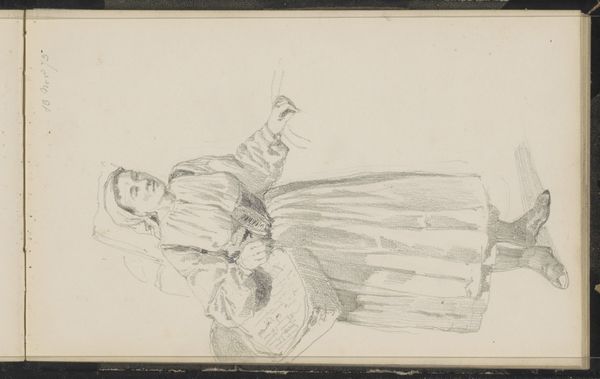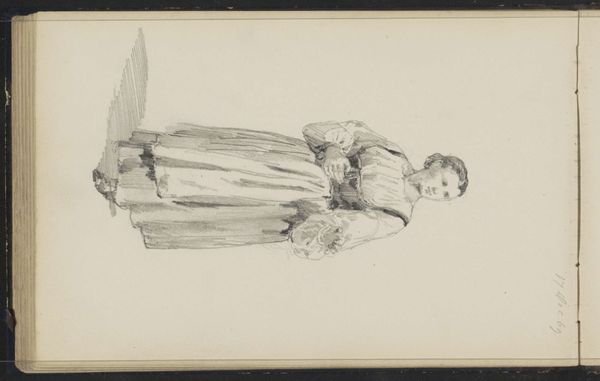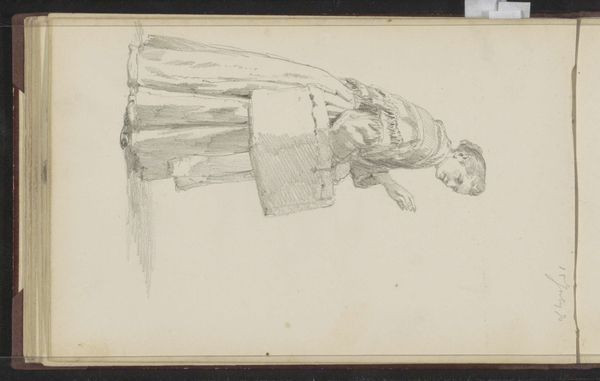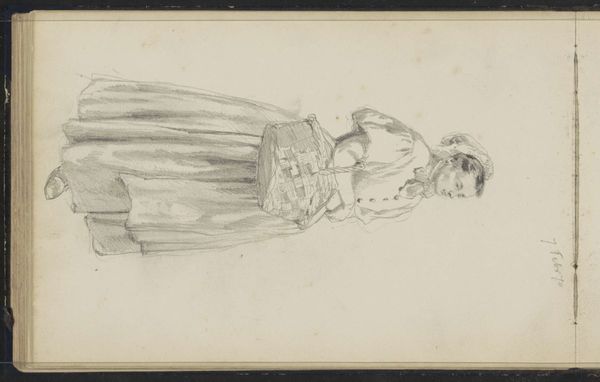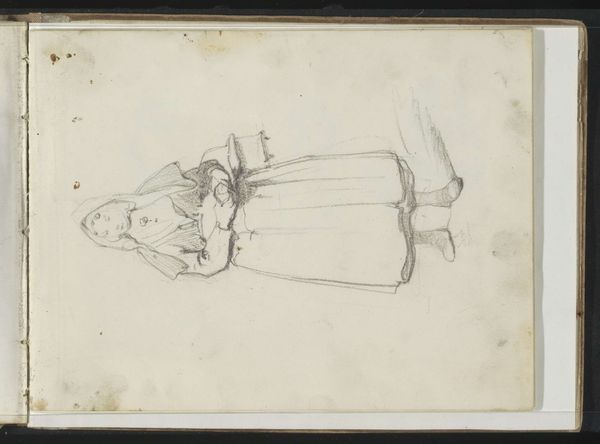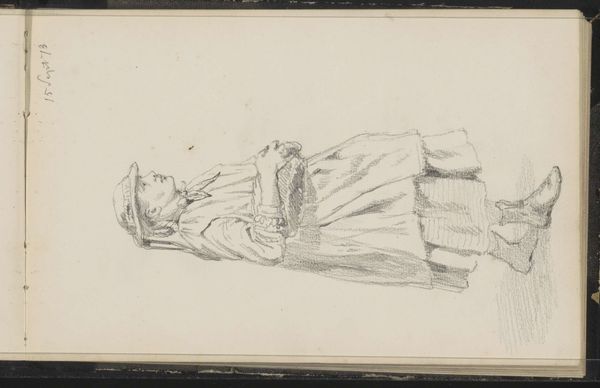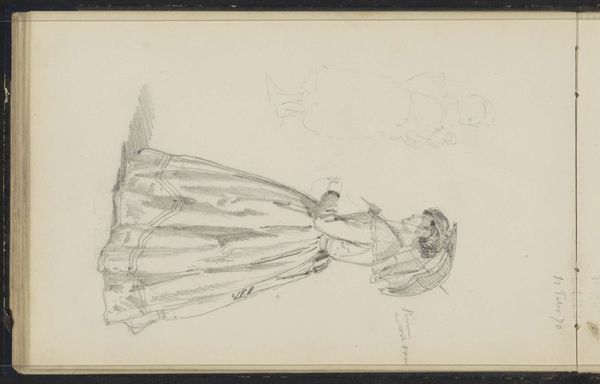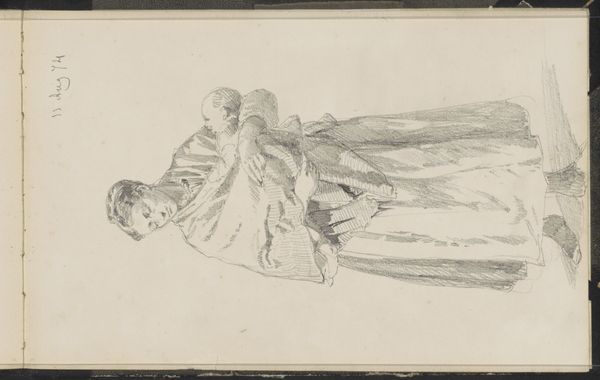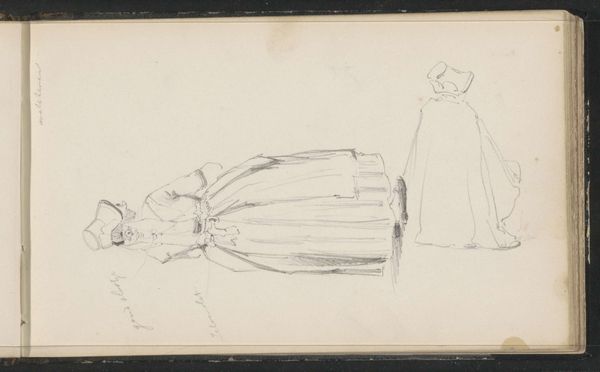
Copyright: Rijks Museum: Open Domain
Editor: This drawing, "Zittende vrouw in een kostuum uit Goes," made with pencil on paper by Cornelis Springer around 1856-1861, has such a delicate, almost fleeting quality. I’m curious, what strikes you when you look at it? Curator: Well, I immediately see a figure encased in tradition. Think of "Goes," not just as a location, but as a repository of cultural memory, condensed and visually expressed through this costume. Every line, every fold, tells a story. Editor: So you’re saying the clothing acts as a kind of visual language? Curator: Precisely. It speaks of identity, of belonging, of a connection to the past. Look at the hat, the layers of fabric. Each element likely had significance. Think of folk costumes more broadly; how they served to visually encode information about the wearer. Marital status? Region of origin? Editor: It's interesting to consider the emotional weight those symbols would carry. Were these costumes static, or would they evolve over time? Curator: Costumes evolve, reflecting social shifts, but always tethered to origin. The costume becomes both a shield and a celebration – a way to visually negotiate identity. And drawings like this allow those cultural artifacts to continue telling stories. The symbolism invites interpretation, what does it mean to us now? Editor: I hadn't thought about clothing holding so much cultural information, almost like a walking archive! Thanks for sharing that perspective. Curator: And thank you, I've come to a new appreciation for the garment.
Comments
No comments
Be the first to comment and join the conversation on the ultimate creative platform.
